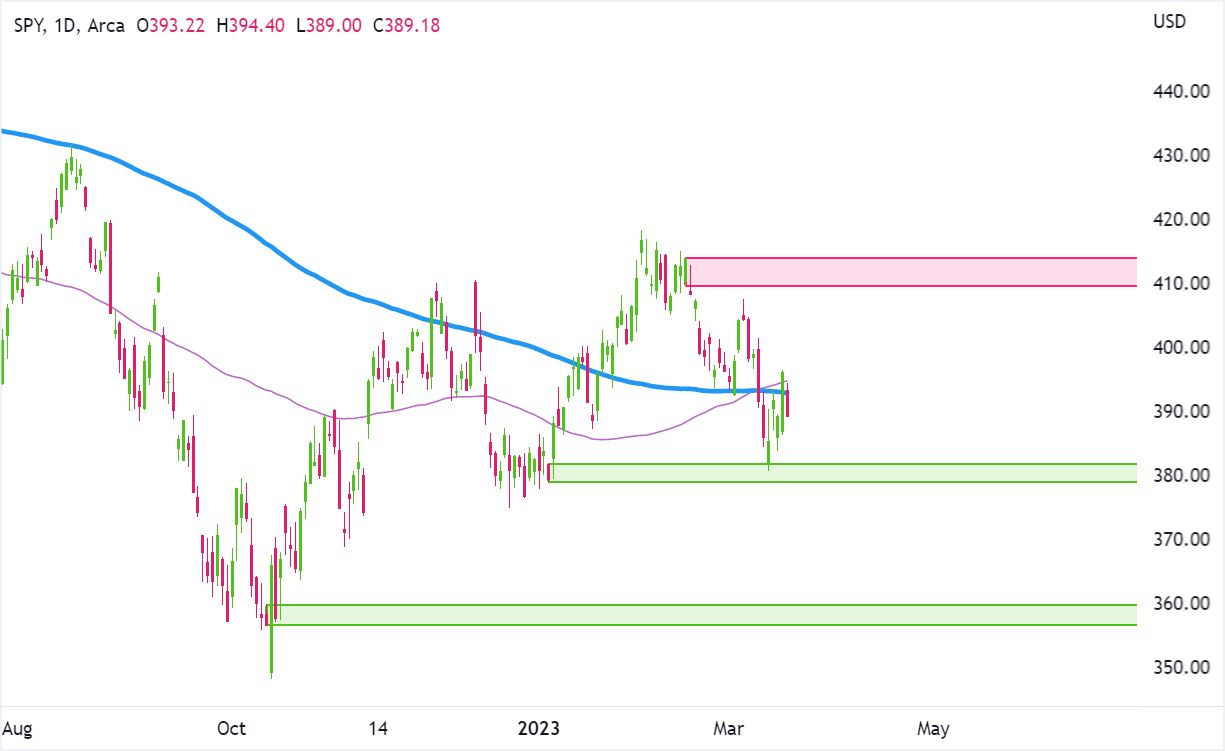Introduction
A trading block, also known as a regional trade agreement, is a cooperative arrangement between countries to promote economic integration by reducing trade barriers and facilitating cross-border trade. It is a strategic initiative taken by nations to enhance their economic growth, strengthen their commercial ties, and reap the benefits of globalization.
Trading blocks have gained prominence in recent decades as countries seek to create favorable trading conditions and foster closer economic cooperation within a specific region. These agreements typically involve a group of countries that share geographic proximity, similar economic characteristics, or a common political goal.
The primary objective of establishing a trading block is to boost economic growth by promoting trade liberalization, facilitating the flow of goods and services, and attracting foreign investment. This is achieved by eliminating or reducing barriers to trade, such as tariffs, quotas, and regulatory restrictions, among member countries.
Furthermore, trading blocks strive to enhance regional economic stability, strengthen political relations, and foster cultural exchange among member nations. By pooling resources, expertise, and efforts, participating countries can create a more favorable business environment and leverage collective bargaining power in global markets.
Since the formation of the European Union (EU) in the 1950s, trading blocks have multiplied worldwide, with numerous agreements existing in various regions, including the North American Free Trade Agreement (NAFTA), Mercosur in South America, the Association of Southeast Asian Nations (ASEAN), and the African Continental Free Trade Area (AfCFTA).
Definition of Trading Block
A trading block refers to a regional trade agreement between two or more countries that aims to promote economic integration by reducing trade barriers and fostering closer cooperation in areas such as trade, investment, and regulatory policies. It is a collective effort by nations to enhance their economic growth and reap the benefits of increased trade and collaboration.
At its core, a trading block is an arrangement that allows member countries to establish preferential trade relations with one another, often resulting in the liberalization of trade within the bloc. This means that participating countries agree to reduce or eliminate tariffs, quotas, and other trade-related barriers on goods and services exchanged between them.
In addition to trade liberalization, trading blocks also focus on promoting harmonization of regulations and standards, facilitating the movement of capital and labor, and encouraging investments among member countries. By aligning their policies and regulations, trading block members can create a more cohesive and efficient economic environment.
Furthermore, a trading block often establishes a common external trade policy, which means that member countries collectively negotiate trade agreements with non-member nations. This strengthens the bargaining power of block members and allows them to secure better market access and trade terms with external partners.
It is important to note that trading blocks differ from free trade areas or customs unions. While free trade areas focus primarily on reducing trade barriers among member countries, customs unions, in addition to free trade, also establish a common external tariff on goods imported from countries outside the union. Trading blocks incorporate aspects of both, with a greater emphasis on economic integration and coordination of policies.
Overall, a trading block serves as a platform for member countries to cooperate in areas of commerce, investment, and economic policies. By pooling resources and aligning their interests, participating nations can create an environment that promotes trade, fosters economic development, and strengthens regional integration.
Characteristics of Trading Blocks
Trading blocks possess several distinct characteristics that define their nature and functioning. Understanding these characteristics is crucial to comprehend the essence and impact of these regional trade agreements. The key characteristic of trading blocks are as follows:
1. Tariff Reduction: One of the primary objectives of trading blocks is the reduction or elimination of tariffs on goods traded among member countries. This tariff reduction promotes intra-bloc trade, boosts competitiveness, and encourages economic growth within the region.
2. Trade Liberalization: Trading blocks aim to liberalize trade by removing non-tariff barriers such as quotas, licensing requirements, and technical regulations. By facilitating the flow of goods and services, member countries can take advantage of their comparative advantages and increase productivity.
3. Common External Trade Policy: Trading blocks often establish a common external trade policy, which allows member countries to negotiate trade agreements with non-member nations collectively. This coordinated approach enhances bargaining power and improves market access for block members in international trade.
4. Economic Integration: Trading blocks seek to deepen economic integration among member countries by harmonizing regulations, policies, and standards. This integration reduces transaction costs, facilitates business operations, and promotes a seamless flow of goods, services, capital, and labor.
5. Shared Objectives: Member countries within a trading block share common economic, social, or political objectives. These shared objectives form the basis for cooperation and collaboration, creating a unified approach to address common challenges and capitalize on shared opportunities.
6. Institutional Framework: Trading blocks often establish a formal institutional framework to govern the operations and decision-making processes within the block. This framework ensures effective implementation of trade agreements, dispute resolution mechanisms, and coordination of policies among member countries.
7. Cooperation in Non-Trade Areas: While trading blocks primarily focus on trade-related matters, they often extend cooperation beyond pure trade. This includes collaboration in areas such as investment, intellectual property, competition policy, and labor mobility, among others.
8. Gradual Integration: Trading blocks typically adopt a phased approach to integration, allowing member countries to gradually align their economies and institutions. This gradual process helps manage the adjustment costs and allows countries to address domestic concerns during the integration process.
The characteristics of trading blocks enable member countries to foster economic integration, promote trade growth, and strengthen regional cooperation. By leveraging these characteristics, trading blocks aim to create a supportive environment for member countries to enhance their competitiveness and achieve sustainable economic development.
Types of Trading Blocks
Trading blocks come in various forms, each with its own degree of integration and characteristics. Here are some of the common types of trading blocks:
1. Free Trade Area (FTA): A free trade area is the least integrated form of a trading block. In an FTA, member countries agree to eliminate tariffs and trade barriers on goods traded among themselves, while maintaining individual external trade policies with non-member countries. Examples include the North American Free Trade Agreement (NAFTA) and the European Free Trade Association (EFTA).
2. Customs Union: A customs union builds upon the concept of a free trade area by adopting a unified external trade policy. Member countries within a customs union apply a common tariff on goods imported from non-member countries. Examples include the Southern African Customs Union (SACU) and the Andean Community.
3. Common Market: A common market takes integration a step further by allowing for the free movement of goods, services, capital, and labor among member countries. In addition to removing trade barriers, member countries harmonize regulations, policies, and standards. The European Single Market is a prime example of a common market.
4. Economic Union: An economic union involves closer coordination of economic policies among member countries, aiming for deeper integration. In addition to the removal of trade barriers and the establishment of a common market, an economic union typically includes shared monetary policies, harmonized fiscal policies, and a centralized governance structure. The European Union (EU) is an economic union.
5. Political Union: A political union represents the highest level of integration among member countries. It involves not only economic integration but also a shared political and legal framework. A political union goes beyond economic cooperation to incorporate elements such as a common currency, a unified foreign policy, and shared governance institutions. The EU is progressing towards a political union.
6. Bilateral and Multilateral Agreements: Apart from the regional trading blocks mentioned above, countries can also form bilateral or multilateral agreements. These agreements involve trade liberalization and cooperation between two or more countries outside the framework of a larger trading block. Examples include the United States-Mexico-Canada Agreement (USMCA) and the Comprehensive and Progressive Agreement for Trans-Pacific Partnership (CPTPP).
Trading blocks come in various forms to accommodate different levels of economic and political integration based on the objectives and priorities of member countries. The type of trading block chosen reflects the level of cooperation desired and the scope of integration sought by participating nations.
Advantages and Disadvantages of Trading Blocks
Trading blocks offer several advantages and disadvantages to member countries. While these regional trade agreements provide opportunities for economic growth and cooperation, they also present challenges and potential downsides. Here are the main advantages and disadvantages of trading blocks:
Advantages:
1. Increased Market Access: Trading blocks enhance market access by reducing or eliminating trade barriers among member countries. This allows businesses to reach a larger consumer base, leading to increased trade and economic growth.
2. Trade Diversification: Member countries can diversify their export markets within the trading block. By accessing new markets, businesses can reduce their reliance on traditional trading partners, mitigating the risks associated with over-dependence on a single market.
3. Economies of Scale: Trading blocks enable businesses to benefit from economies of scale by producing larger quantities and enjoying lower production costs. This increased efficiency makes their products more competitive in domestic and international markets.
4. Foreign Direct Investment (FDI): Trading blocks attract more foreign direct investment due to the increased market size, harmonized regulations, and integration benefits. FDI inflows stimulate economic growth, create job opportunities, and facilitate the transfer of technology and expertise.
5. Policy Coordination: Trading blocks promote policy coordination among member countries, allowing for closer collaboration in areas such as customs, regulations, and standards. This alignment streamlines trade procedures and reduces transaction costs for businesses.
6. Regional Economic Stability: Trading blocks can contribute to regional economic stability by fostering closer economic integration and cooperation. Shared economic interests and harmonized policies help buffer member countries from external shocks and enhance their resilience.
Disadvantages:
1. Trade Diversion: While trading blocks promote intra-bloc trade, they may divert trade from more efficient non-member countries. This trade diversion can lead to inefficiencies and suboptimal allocation of resources.
2. Dependency on Member Countries: Overreliance on other member countries within the trading block can make economies vulnerable to economic downturns or political uncertainties within the bloc. This interdependence may limit a country’s policy space and strategic decision-making.
3. Complex Regulatory Environment: Trading blocks often involve complex regulatory frameworks and standards, requiring businesses to navigate multiple sets of rules. Compliance costs and administrative burdens can be higher for smaller businesses, potentially creating barriers to entry.
4. Weakening of Non-Member Trade Relations: Non-member countries may experience a disadvantage when trading with trading block members, as preferential trade arrangements within the bloc can result in reduced trade opportunities for external partners.
5. Inequality and Disparities: Trading blocks may exacerbate inequalities between member countries. Stronger economies within the bloc may benefit more from the trade agreement, while weaker economies may face challenges in adapting to increased competition.
6. Sovereignty and Loss of Autonomy: Membership in a trading block requires countries to cede some control over their trade and economic policies. This may limit a country’s ability to pursue independent strategies and respond effectively to changing global economic conditions.
It is important for countries to carefully consider these advantages and disadvantages when deciding to join or participate in a trading block. Continuous assessment and revision of trading block agreements can help address any drawbacks while maximizing the benefits of regional integration and trade cooperation.
Examples of Trading Blocks
Trading blocks have proliferated across different regions of the world, each with their own unique characteristics and objectives. Here are some notable examples of trading blocks:
1. European Union (EU): The European Union is one of the largest and most integrated trading blocks in the world. Its primary objective is to promote economic and political integration among its member countries. The EU operates as a single market with free movement of goods, services, capital, and labor, and a common external trade policy.
2. North American Free Trade Agreement (NAFTA): NAFTA was a trading block that brought together the United States, Canada, and Mexico. It aimed to eliminate trade barriers and establish a free trade zone among the three countries. In 2020, NAFTA was replaced by the United States-Mexico-Canada Agreement (USMCA), which further modernized and updated the trade agreement.
3. Association of Southeast Asian Nations (ASEAN): ASEAN is a regional trading block that comprises ten member countries in Southeast Asia. Its objective is to promote economic integration, enhance trade facilitation, and promote cooperation in various sectors. Although not as deeply integrated as the EU, ASEAN has made significant progress in reducing tariffs and promoting intra-regional trade.
4. Mercosur: Mercosur is a trading block in South America that includes countries such as Argentina, Brazil, Paraguay, and Uruguay. Its objective is to promote economic integration and cooperation among member countries, with a focus on reducing trade barriers and fostering regional development.
5. African Continental Free Trade Area (AfCFTA): AfCFTA is an ambitious trading block that aims to create a single market for goods and services in Africa. It seeks to promote intra-African trade, enhance competitiveness, and deepen economic integration across the continent. AfCFTA has the potential to significantly boost trade and economic development in Africa.
6. Pacific Alliance: The Pacific Alliance is a trading bloc in Latin America that includes Chile, Colombia, Mexico, and Peru. The alliance aims to promote deeper economic integration, enhance trade relations with Asia-Pacific countries, and foster regional development through cooperation in various sectors.
7. Commonwealth of Independent States (CIS): The CIS is a trading block that consists of nine former Soviet Republics. It aims to promote economic cooperation and integration among its member countries, with a focus on trade liberalization, investment facilitation, and harmonization of economic policies.
These are just a few examples of the numerous trading blocks that exist globally. Each trading block has its own unique characteristics, objectives, and levels of integration. The formation of these trading blocks reflects the growing trend of regional economic cooperation and the desire to leverage collective strength for the benefit of member countries.
Conclusion
Trading blocks play a significant role in fostering economic integration, promoting trade liberalization, and enhancing regional cooperation among member countries. These regional trade agreements have become increasingly prevalent as nations recognize the benefits of closer economic ties and collaboration within specific geographic regions.
Throughout this article, we have explored the definition of trading blocks, their characteristics, types, advantages, disadvantages, and provided examples of notable trading blocks. From the European Union’s deep integration to the North American Free Trade Agreement’s focus on regional trade, each trading block serves as a framework for member countries to pursue shared goals and unlock economic potential.
Trading blocks offer advantages such as increased market access, trade diversification, and policy coordination, which can lead to economic growth, job creation, and enhanced competitiveness. At the same time, they present challenges like trade diversion, complex regulatory environments, and potential loss of autonomy.
It is important for countries to carefully weigh the benefits and drawbacks before joining or participating in a trading block. Flexibility, continuous evaluation, and adapting to changing global dynamics are crucial for a trading block’s long-term success.
In an interconnected world, trading blocks provide a platform for countries to navigate the complexities of international trade, boost economic growth, and strengthen regional stability. By fostering closer economic integration and cooperation, trading blocks contribute to a more interconnected global economy.
As the world continues to evolve, trading blocks are likely to continue shaping the landscape of international trade. It is essential for nations to assess their strategic interests, evaluate potential partnerships, and consider the long-term implications of participation in trading blocks as they strive for economic prosperity and development.

























